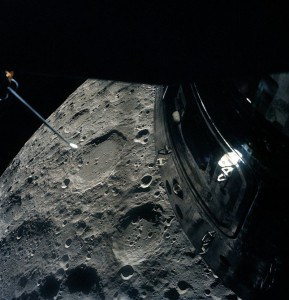Apollo 13 was launched on time from the Kennedy Space Center on April 11, 1970 at 2:13 p.m. EST. It was to be the third manned space flight to land on the moon, but an onboard explosion on the second day of the mission turned the mission into a quest to bring the crew home alive. The odds weren’t in the crew’s or in Mission Control’s favor, but strategic thinking, ingenuity, patience under pressure, hard work, and good fortune did indeed bring the crew safely home—six days after they had left the earth and four days after the explosion.
Lessons from Apollo 13 abound. If we heed them, we can greatly increase our effectiveness as we address one of today’s most important and pressing issues—marriage.
“Limited Options” tells the story of Apollo 13
and makes appropriate applications.
Access the article here.
Access an expanded version of the article here.
Copyright © 2016 B. Nathaniel Sullivan. All rights reserved.
Pictured at top is the three-man crew of Apollo 13, which consisted of (left to right) Commander James Lovell, Command Module Pilot Jack Swigert, and Lunar Module Pilot Fred W. Haise. In the next photo, the imperiled spacecraft passes by the moon. The view was spectacular, but the overarching concern was getting the crew home safely.
The article consists of 2700 words; the expanded version of the article, 3700 words.


Be First to Comment